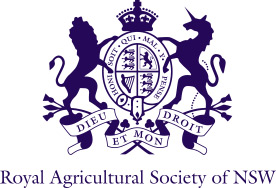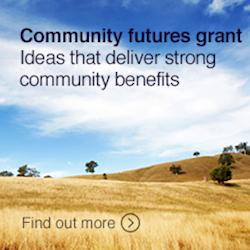Unlock the Secrets Heritage Pavilion 2021: Between the Wars
Posted on : 30 March 2021
The interwar period a difficult time for Australians. But the Royal Agricultural Society of NSW helped in the recovery, finding cause for hope, and modernising itself in the process.
This year's Heritage Pavilion looks at the era that strengthened and modernised the RAS.
The President quoted Longfellow.
Out of the shadow of night
The World moves into light;
It is daybreak everywhere.
Standing before two hundred delegates at the Primary Producers' Conference, Samuel Hordern, the tall, good-looking leader of the RAS, could afford to be poetic. Just eight days before, WWI had ended. But peace was foreseen and in a grand gesture of optimism the RAS had already arranged this gathering of rural experts from across peak industry bodies, government and science. Its task was nothing less than the resetting of the state's agricultural agenda. Complex post-war problems urgently needed solving, but there were post-war opportunities too, and to seize them, stimulation was required. This meeting of minds would analyse the issues and formally put its ideas to government for action.
The conference, held on 19-22 November 1918, was conceived as the first event in a series to mark the Society's 50th year of incorporation. The really big public celebration, however, would take place the following year at the Show, an occassion which would also mark the Society’s 50th anniversary of exhibitions in the city. Styled as the 'Jubilee Show', it would be stupendous.
At the conference, unity and cooperation were the words on everyone's lips - and they were said sincerely. Wartime had shown that when partisanship took a backseat much could be achieved by people working together for a greater good. In Samuel Hordern the Society was lucky to have a president whose own brand of leadership encouraged such behaviour. In his orbit people worked harmoniously and with respect for each other: he got out of their way, allowing them to do what they did well, and he appreciated them for it. For the next 20 years Hordern remained at the helm, presiding over the most progressive and stable period of governance in the Society's history.
During that era the Show changed from a basic affair into a world-class exhibition. But the transition was not seamless, and some of the setbacks along the way could have been dire.
The Jubilee
In 1918 a powerful new subcommittee was formed: the Education Committee. Tellingly, it was this group who were charged with planning Jubilee activities: proof that opportunities for advancement and training were front of mind for the Society. For the Jubilee Show, lectures and demonstrations were prepared with the goal of helping the new farmers coming onto the land as part of the soldier settlement scheme. The RAS was concerned for their welfare, knowing how tough farming could be for the inexperienced. It's a testament to the altruistic spirit of the times that the RAS took this approach. They might easily have gone down an obstructionist route, given that many of its members were established landholders, forced to carve up their properties to provide small acreages for the scheme. While the Society had reservations about the efficacy of the plan, it appreciated the motivations behind it.
But the Jubilee Show would offer more than schooling. After wartime, everyone was looking forward to brighter times. Loads more entertainment was promised, and there would be large-scale, sophisticated displays showing the history of various industries and their likely future. For this the government kicked-in expertise and extra money.
Months of meticulous organisation went into the extravaganza and excitement built. But, at the last minute, it all came to nothing.
A deadly visitor
Just three weeks before the Jubilee Show opened it was cancelled. Soldiers returning home from Europe had brought the Spanish flu with them, though for a while it seemed the spread of the virus might be contained. For some months the RAS held its nerve and continued with Show plans, justified, it would seem, when the infection abated. But in February the pandemic surged and public gatherings were banned. The Show obviously posed an unacceptable risk, especially when country visitors to the city might carry the virus back to every corner of the state. And yet the government prevaricated, reluctant to close down the Show because of all that had been invested in it - and because they might have to cover the losses incurred by exhibitors. The government pushed for postponement, but that was an unacceptable option when the timeframe of the crisis was unknown. Determined not to pull the pin themselves, but finding the indecision untenable, the RAS sent a delegation to confer with the Premier: in just nineteen days’ time the Show was due to open. While Cabinet discussed the issue, the delegation waited in the hallway outside. Finally, the edict came and the Jubilee Show of 1919 was cancelled.
At the Showground, the Royal Hall of Industries had already been earmarked as an emergency overflow hospital if the pandemic took hold, and now it was put to use. In NSW over 6,000 people died, and in the Sydney area alone 300,000 were infected. Rural areas were not spared after all. In short time the deadly visitor found its way to the remotest townships and stations.
At the Showground patient numbers fluctuated, peaking at nearly 500. Death rates in the large, cold buildings were high: the Royal Hall of Industries, the coldest, was put to use as a morgue. In all, around 40 buildings were taken over by the Board of Health. While the RAS had unhesitatingly offered their facilities in the crisis, the Showground hospital was only ever meant to be a place of last resort. However, when the worst was over, the Board of Health showed no inclination to move. The Council grew nervous. Next year's Show would soon be in jeopardy if they did not withdraw. All entreaties were ignored until October 1919, when Council threatened to man the gates to physically stop new admissions.
One hundred years
The RAS lost £75,000 on the Jubilee Show. On top of that a severe, state-wide drought was beginning to affect business in the city. Despite these difficulties, Council remained positive. They would use most of the Jubilee plans for another big Show in 1922. This Show would celebrate the centenary of the establishment of the first agricultural society in NSW, and it's this that we'll mark with our bicentennial in 2022.
As it turned out, the 1922 Centenary Show was a cracker. Three new animal pavilions, a new roadway and tree plantings were finished in time for it, but that was only the beginning of an ambitious building program which would see all the iconic buildings of the Showground in place by the end of the 1930s, including the Member's Grandstand with its majestic clock tower; the Martin and Angus Stands; the Hordern Pavilion; the Commemorative Pavilion; and the Australian Hall of Manufacturers. Many private companies increased their profile on the Showground during this period too, building themselves new premises and halls. Even during the worst of the Great Depression, many improvements and repairs were undertaken, thanks to special low interest loans and the labour provided by unemployment relief schemes.
Dark clouds
Throughout the 1920s Australian cities grew exponentially. Country people who had come to the city during wartime had seen the opportunities on offer and often didn't return. But when the Depression hit, the trend reversed. Folks with country connections went back to them, and countless men hit the road desperate for work, leaving families behind in the city.
Economic tightening in the rural sector began early in 1929 when international demand for agricultural products declined due to oversupply; then Wall Street crashed and worse followed. The RAS acted immediately to cut back expenditure and with prudent management stayed solvent, but it was tough going. By 1931 membership had fallen by half and Show revenue had plunged. Attendance figures were down by 200,000; and commercial exhibitors were hard to attract, despite big reductions in rent. But as the nation's economic health gradually improved, the RAS consolidated its position. An excellent, professionally-run membership drive and a hugely successful Show in 1935 put the Society back on a sound footing.
The positive thinkers on the Council were given free reign again, and they bristled with ideas and plans.
Thoroughly modern
The sesquicentenary of white settlement in Australia was due to be marked in 1938. Seizing the opportunity, the RAS negotiated with government to officially support the Show and make it a major focus of public celebrations. Extra money was duly provided for building works, and by February 1937 the Showground 'was a scene of activity ... some hundreds of men of the various artisan classes being busily engaged...'
When at last the gates opened on this thoroughly modern facility, a million visitors poured in, making the 1938 Show the largest and most staggeringly successful in the Society's history. Posters and radio broadcasts were the new forms of publicity in this era, luring extra people in.
The pride of the nation was on display: Australia's primary and secondary industries and the commercial sector showed off their strengths; while the government demonstrated progress in fields such as telegraphic communications, electricity and gas, munitions and arms, aviation.
Agricultural entries soared to record levels; and in the main arena a Hollywood cowboy and cowgirl act absolutely wowed the crowd.
Indeed, Western-style entertainment had become so popular, because of Hollywood films, that the following year the bill was expanded to include a contingent of Native Americans from Canada. That particular act was sourced during a tour of the US by two RAS Councillors, sent to investigate North American agricultural exhibitions. Fired up by all they'd seen, the Councillors returned with the idea of styling the next big Show as a World Fair.
But again, it was not to be. War broke out in September 1939 and the army took over parts of the Showground. For two years they vacated at Easter so the Show could be held, but after the '41 Show it was obvious to all that the situation could not continue and the Show closed until 1947.
Despite the difficulties, the 1920s and 1930s had been golden decades in the Show's history, thanks to an astute cohort of collegiately-minded Councillors. Because of their great modernising work, the Society was ideally placed to survive the disruptions of yet another war - and come out the other side, ready for the future.





